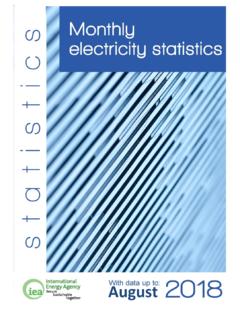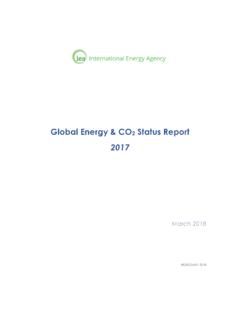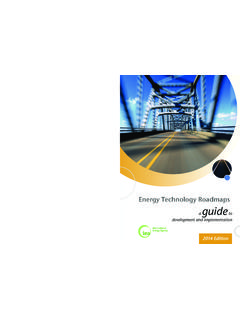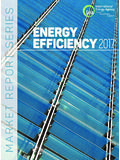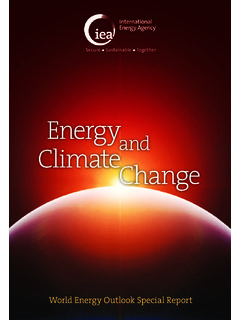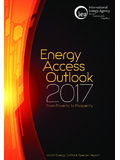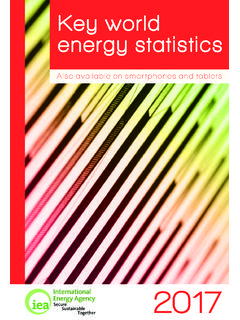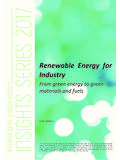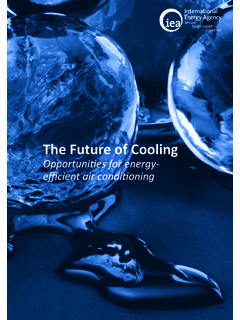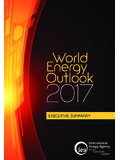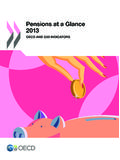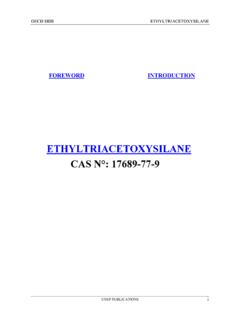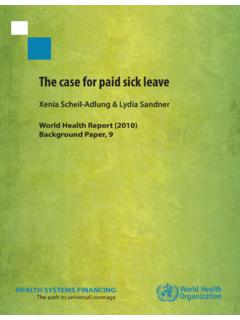Transcription of World Energy Outlook-2017
1 2017Wo rl 123/10/2017 15:24 123/10/2017 15:32:54 Chapter 1: Introduction and scopeINTERNATIONAL Energy AGENCYThe International Energy Agency (IEA), an autonomous agency, was established in November 1974. Its primary mandate was and is two-fold: to promote Energy security amongst its member countries through collective response to physical disruptions in oil supply, and provide authoritative research and analysis on ways to ensure reliable, affordable and clean Energy for its 29 member countries and beyond. The IEA carries out a comprehensive programme of Energy co-operation among its member countries, each of which is obliged to hold oil stocks equivalent to 90 days of its net imports.
2 The Agency s aims include the following objectives: nSecure member countries access to reliable and ample supplies of all forms of Energy ; in particular, through maintaining effective emergency response capabilities in case of oil supply Promote sustainable Energy policies that spur economic growth and environmental protection in a global context particularly in terms of reducing greenhouse-gas emissions that contribute to climate change. nImprove transparency of international markets through collection and analysis ofenergy data. nSupport global collaboration on Energy technology to secure future Energy suppliesand mitigate their environmental impact, including through improved energyefficiency and development and deployment of low-carbon solutions to global Energy challenges through engagement and dialogue with non-member countries, industry, internationalorganisations and other member countries.
3 Australia Austria Belgium CanadaCzech RepublicDenmarkEstoniaFinlandFranceGerma nyGreeceHungaryIreland ItalyJapanKoreaLuxembourgNetherlandsNew Zealand NorwayPolandPortugalSlovak RepublicSpainSwedenSwitzerlandTurkeyUnit ed KingdomUnited StatesThe European Commission also participates in the work of the IEA. OECD/IEA, 2017 International Energy Agency Website: note that this publication is subject to specific restrictions that limit its use and distribution. The terms and conditions are available online at 112-12-2016 12:27:02 Chapter 1 | Introduction and scope33 Chapter 1 Introduction and scopeThinking about the future of energyHighlights This year marks the 40th anniversary since the publication of the first World EnergyOutlook.
4 The breadth and depth of the WEO analysis has been transformed sincethen, but its ambition remains the same: to provide all those with a stake in theenergy sector with a robust analysis of possible future Energy pathways, underdifferent sets of assumptions, as an aid to their decision-making. Two of the scenarios in the WEO-2017 are retained from previous Outlooks. TheCurrent Policies Scenario considers only those policies firmly enacted as of mid-2017; this default setting for the Energy system is a benchmark against which theimpact of new policies can be measured. The New Policies Scenario, our centralscenario, incorporates existing Energy policies as well as an assessment of the resultslikely to stem from the implementation of announced policy intentions.
5 Among suchannouncements over the last year: the change in policy orientation in the UnitedStates; a wealth of additional detail on China s plans for an Energy revolution ;a stronger commitment to renewables and electric mobility in India; and plans toshift the power mix in Korea in favour of gas and renewables. Alongside these, the Sustainable Development Scenario appears for the first time,setting out a pathway to achieve the key Energy -related components of the UnitedNations Sustainable Development agenda: universal access to modern Energy by2030; urgent action to tackle climate change (in line with the Paris Agreement); andmeasures to improve poor air quality.
6 The principal determinants of Energy demand growth are Energy policies, whichdiffer between scenarios, and the rates at which economic activity and populationgrow, which do not. In the WEO-2017, global GDP is assumed to grow at a compoundaverage rate of per year, close to the level in last year s outlook . The worldpopulation is assumed to rise from billion in 2016 to billion in 2040. The price of Energy and the costs of key Energy technologies evolve differently inthe various scenarios, depending on levels of deployment and on supply-demandbalances. A common thread however is that costs for key low-carbon technologies notably solar, wind and batteries continue to fall in the outlook period, withmajor implications for investment trends.
7 The outlook for nuclear has meanwhiledimmed somewhat, in response to signs of waning support in some countries. Prices for oil and natural gas both rise from today s levels, although the extent of thisincrease has been revised downwards since the WEO-2016. Downward pressure onprices is largely due to higher US production of tight oil and shale gas, for which costshave come down and resource estimates have increased. OECD/IEA, 201734 World Energy outlook 2017 | Global Energy The scenariosThis year s publication marks the 40th anniversary since the first World Energy outlook (WEO) in 1977, and the 20th edition since it became a regular annual publication in While the main purpose of this analysis as usual is to look forward at possible pathways for global Energy , this is also a moment to look back at how the outlook has evolved.
8 The first outlook in 1977 appeared in the aftermath of the first oil embargo in 1973-1974 and was unsurprisingly a product of its time. The focus was on oil (45% of the global Energy mix at the time, versus 32% today) and on the countries of the Organisation for Economic Co-operation and Development (OECD) (71% of global oil demand at the time, 48% today): the emphasis of the analysis was on how much oil they might consume over the outlook period (to 1985) and where they would get it from. Nonetheless, some essential parameters for the analysis were there from the start. The intention was not to predict the future, but to understand what difference policies could make to that future.
9 There was a recognition of the centrality of Energy security. And there were already alternative policy scenarios, looking at the impact of Energy conservation measures (as they were called at the time) and the scope for alternative sources of oil supply within the OECD, in order to avoid some of the oil security risks projected in the reference case. Fast-forward twenty years and the WEO had already taken on many of the features that are familiar today. For better or worse, it was bigger (weighing in at more than 450 pages versus the 100 or so pages in 1977) and based on a new World Energy Model (WEM) covering all regions and fuels the distant forerunner of the model used today.
10 A central concern was still the outlook for oil markets and oil market security, but gas security also featured strongly: Our work on natural gas suggests no reserve limitations on production at World level before 2020, although increasing use of unconventional gas in North America is likely. (IEA, 1998). But the most noticeable new element was the attention given to the environmental impacts of Energy use, with extensive analysis of Energy -related carbon dioxide (CO2) emissions and the implementation of the 1997 Kyoto Protocol: New policies will be required if the use of nuclear power and renewable Energy sources is to help reduce fossil-fuel consumption and greenhouse-gas emissions [.]
